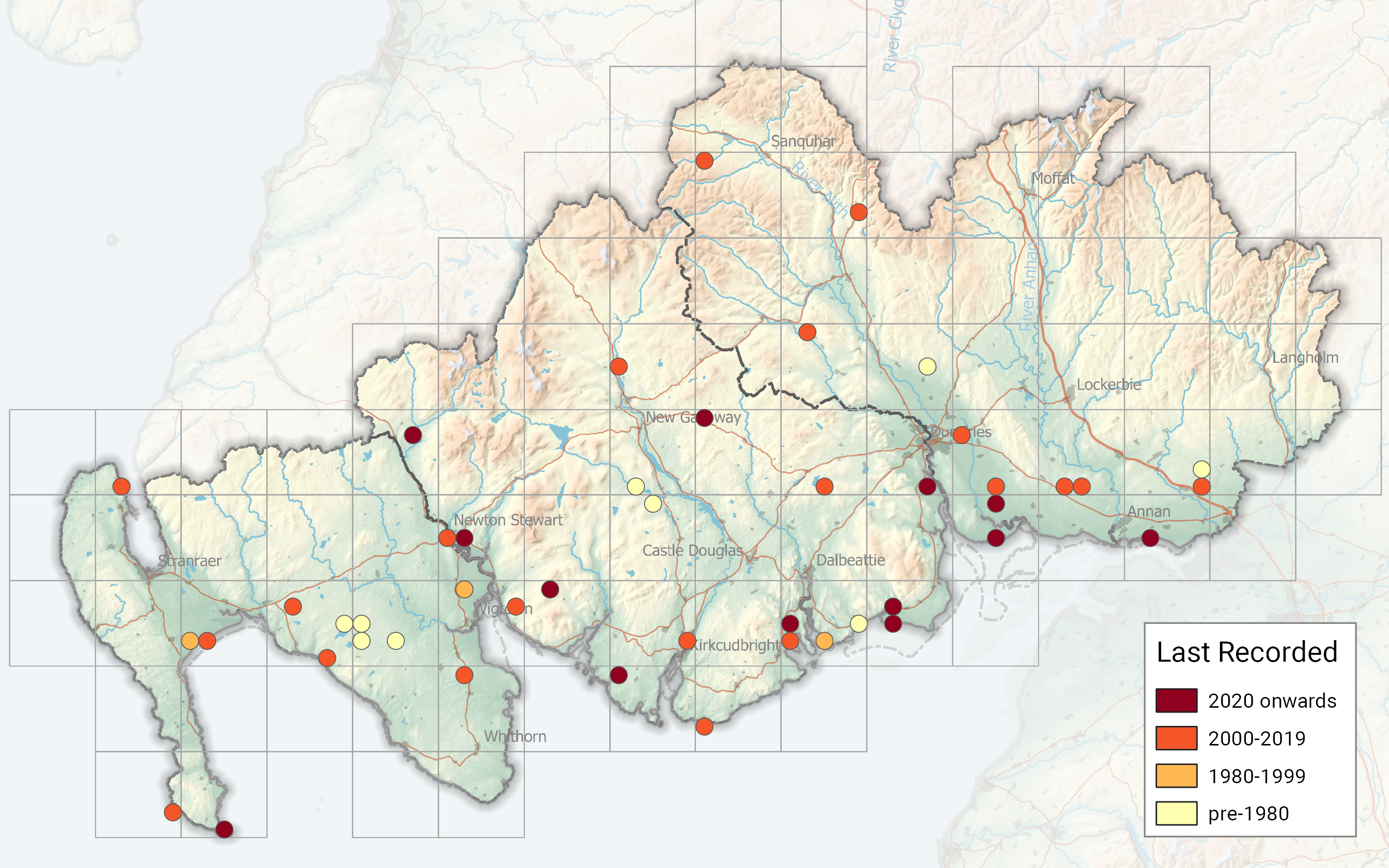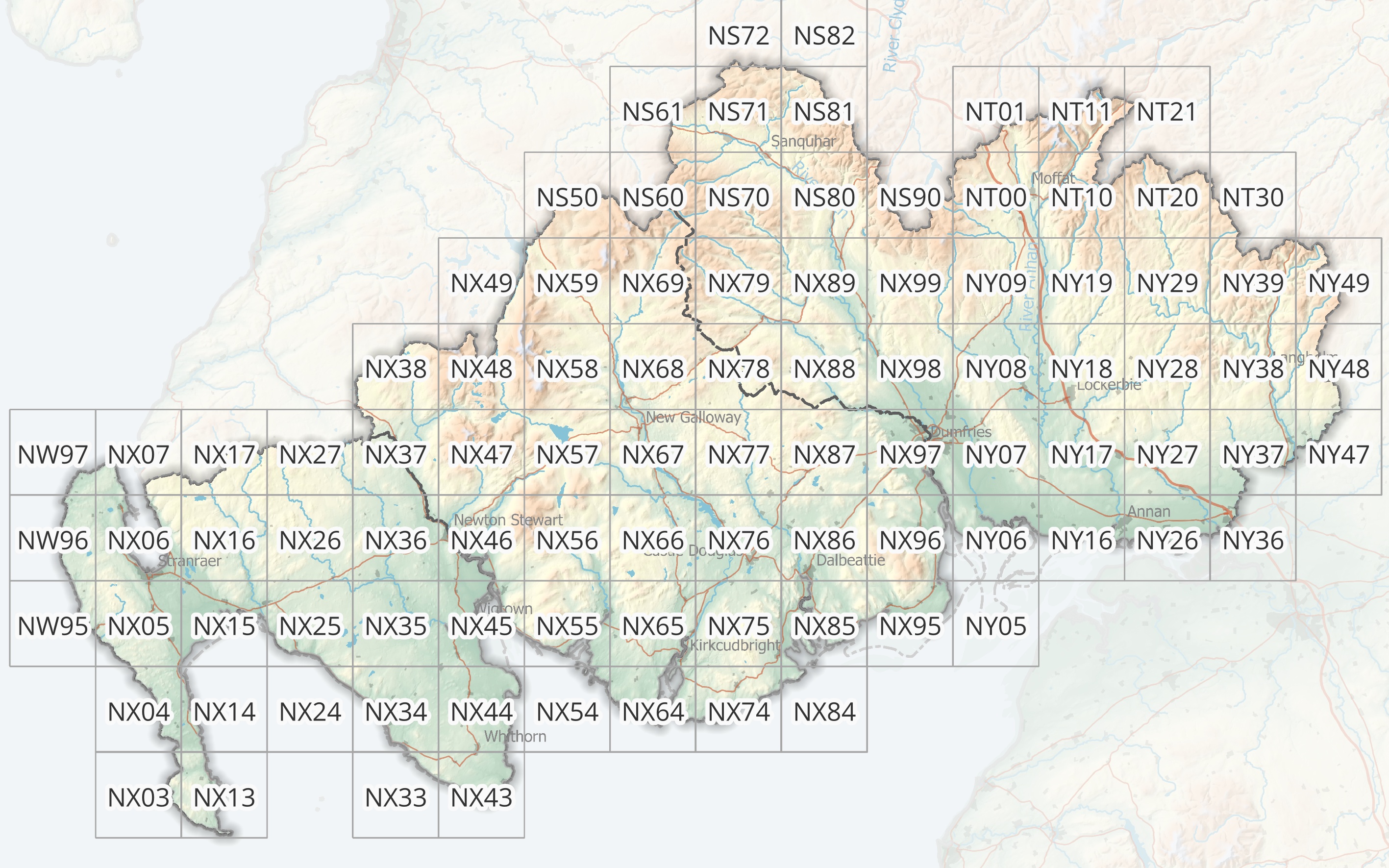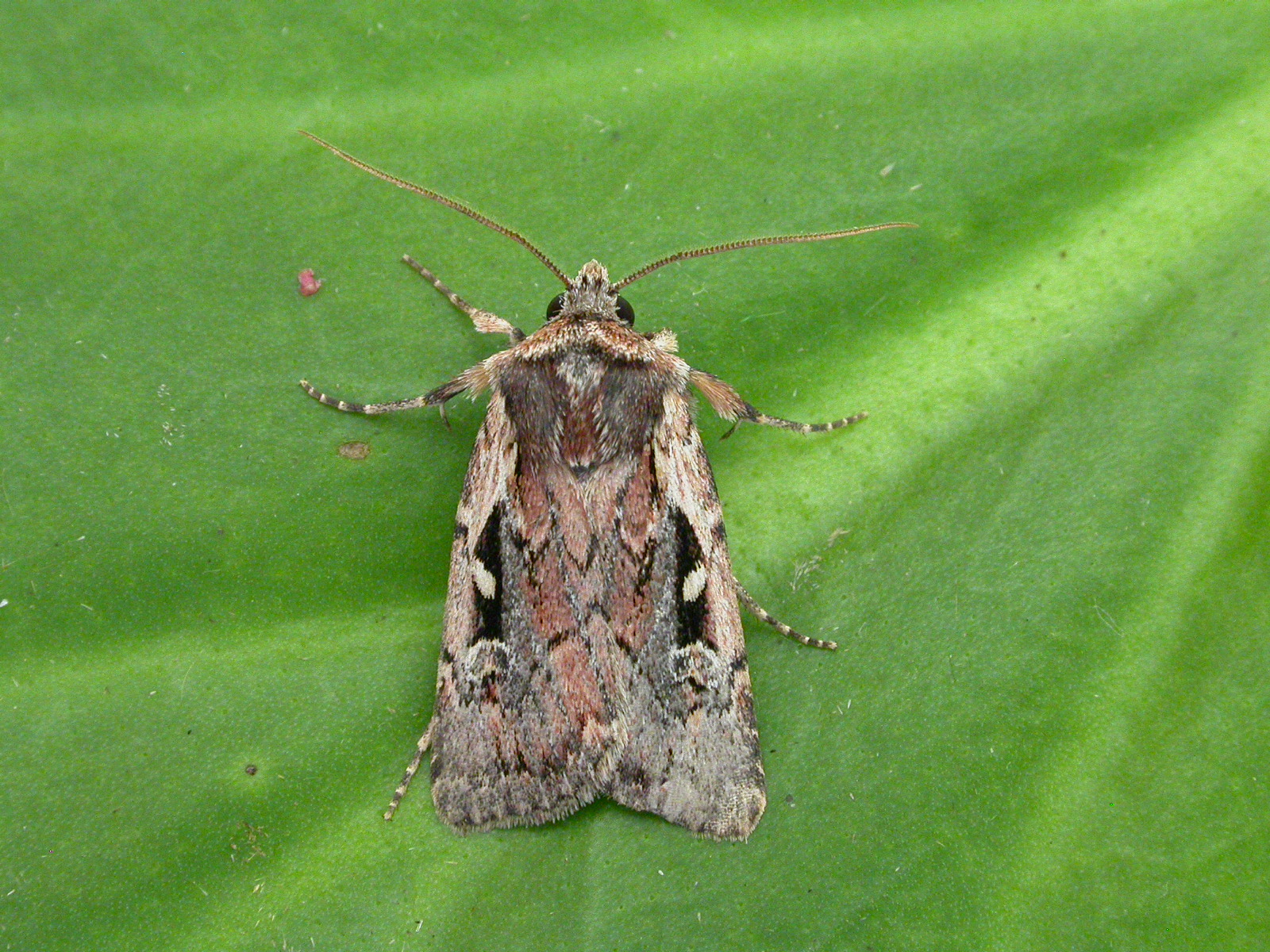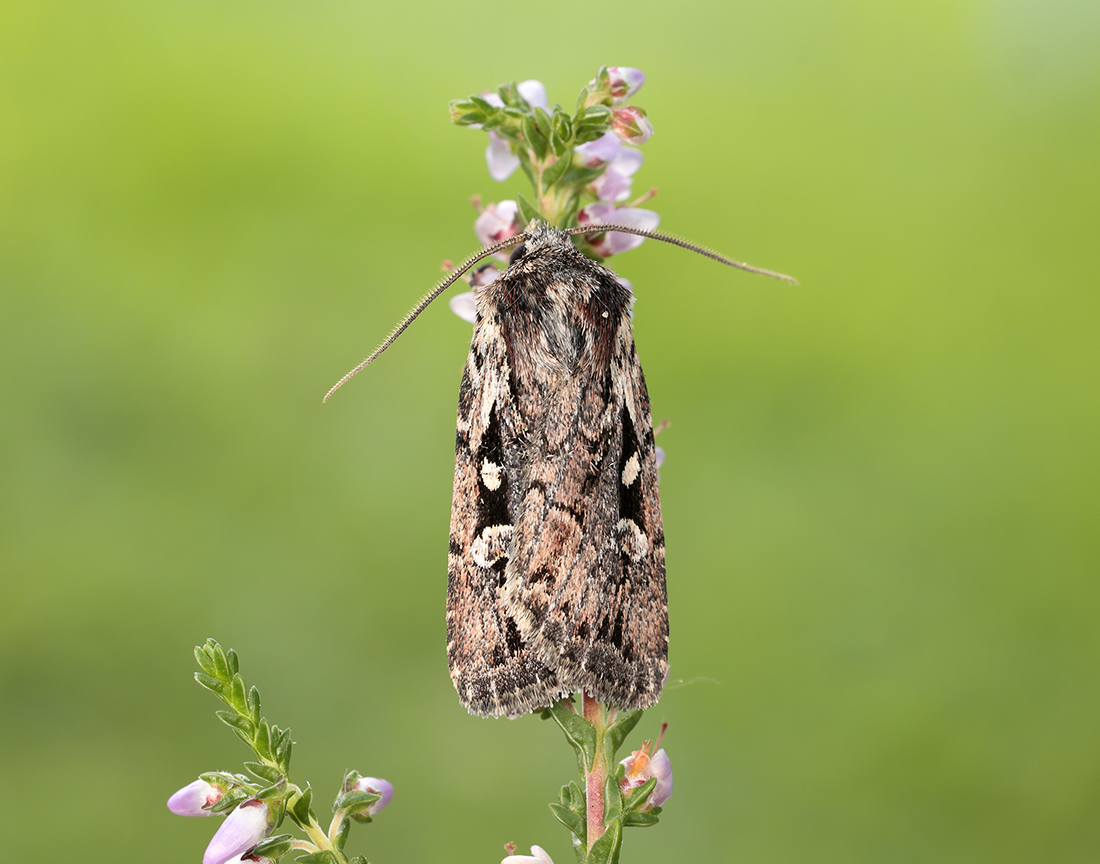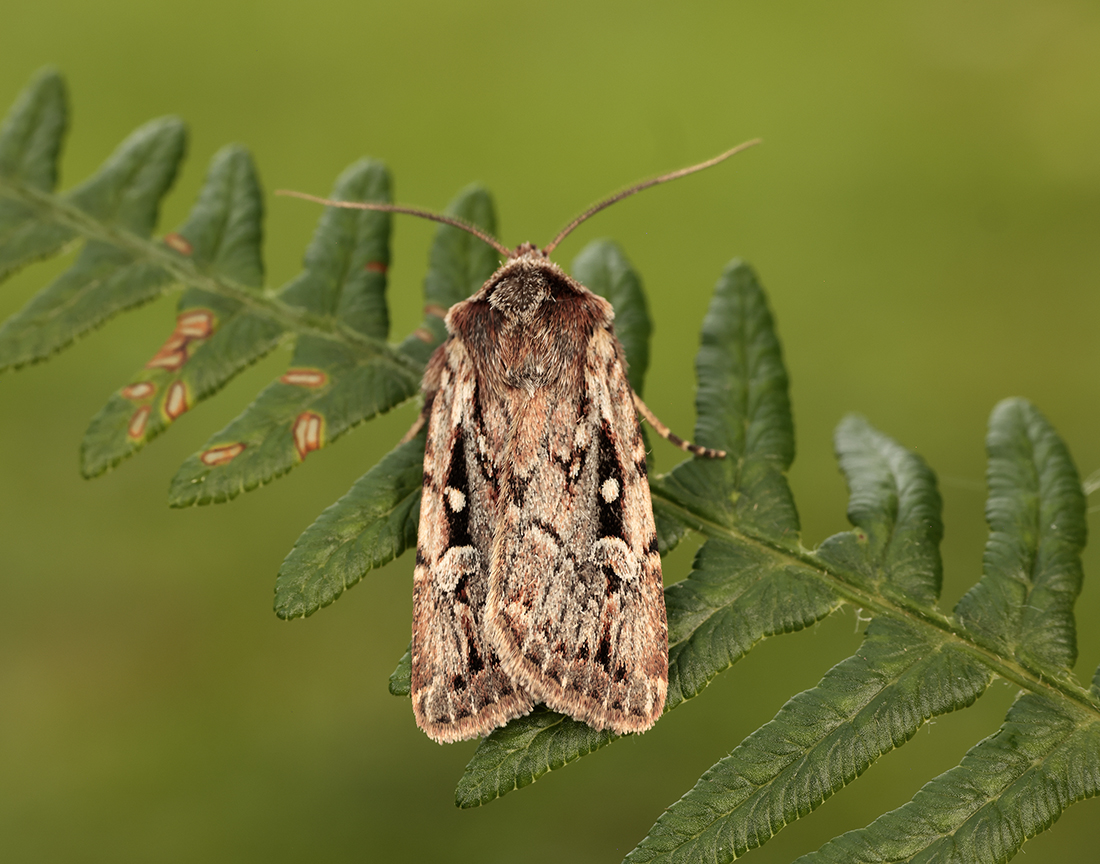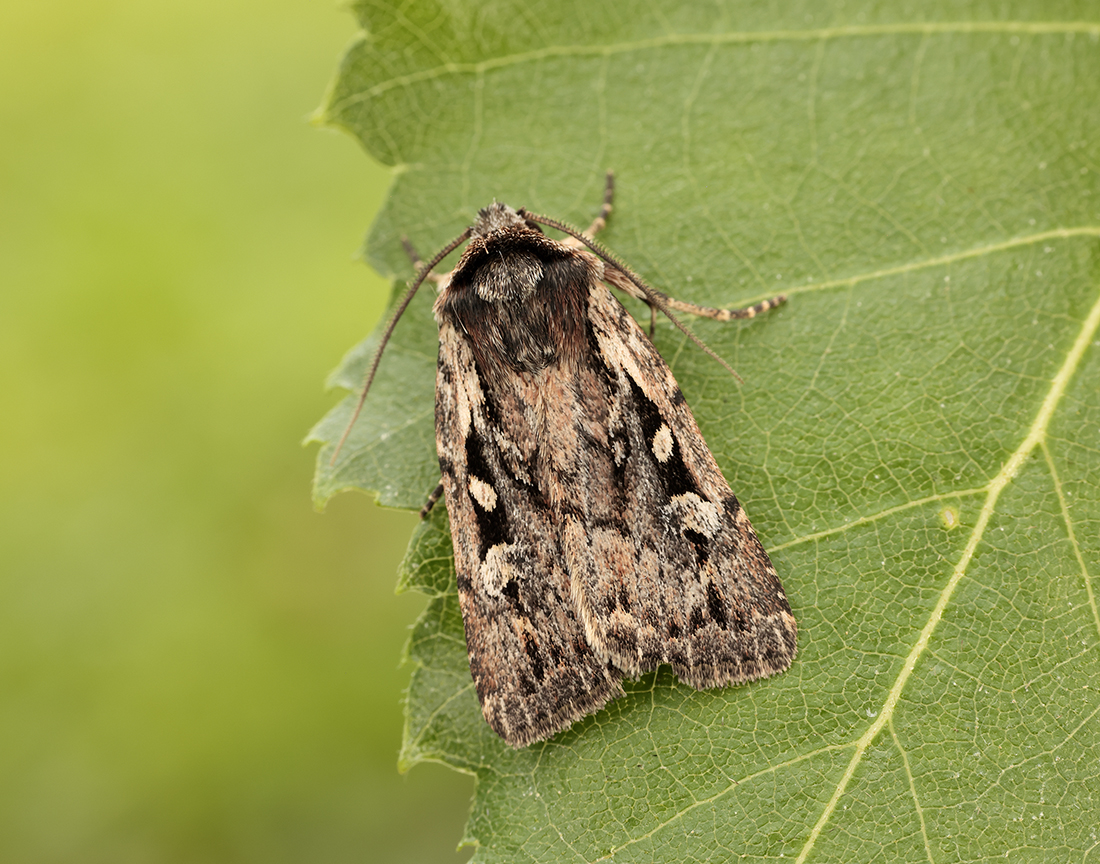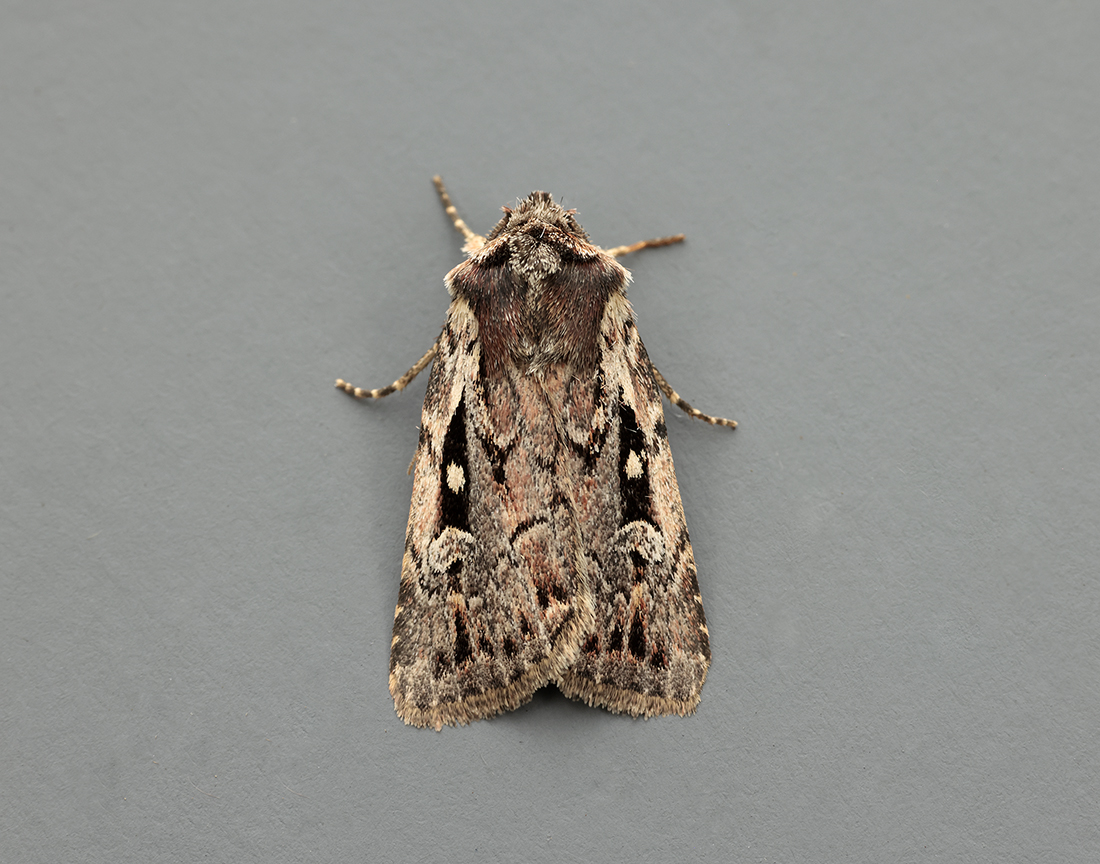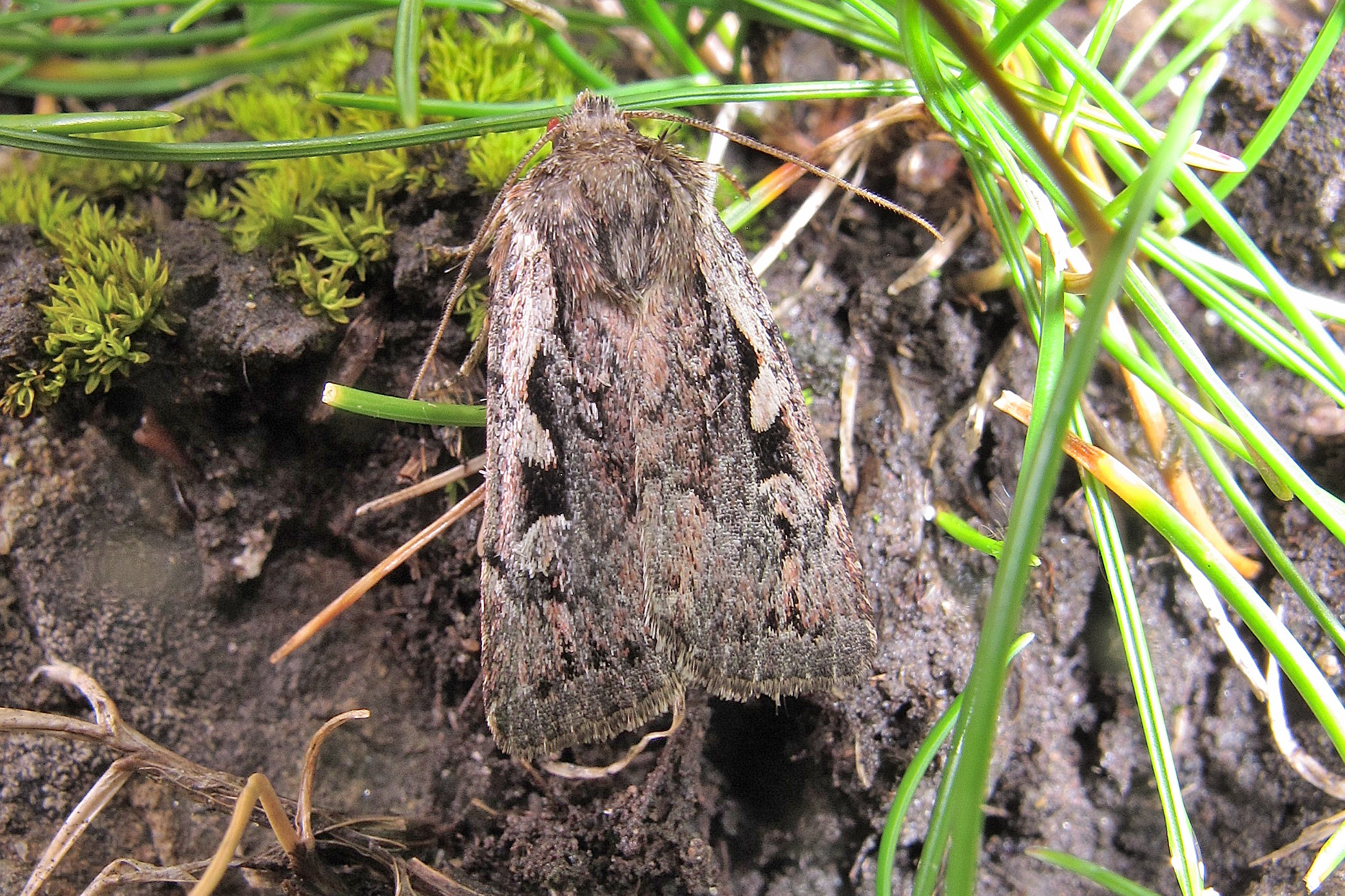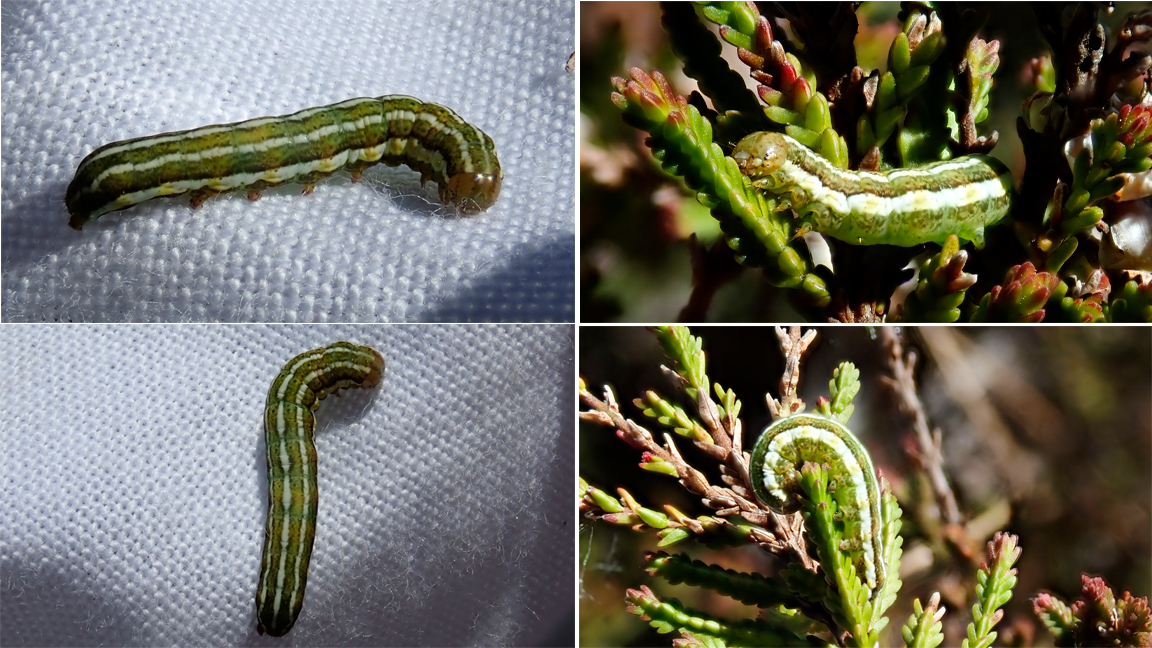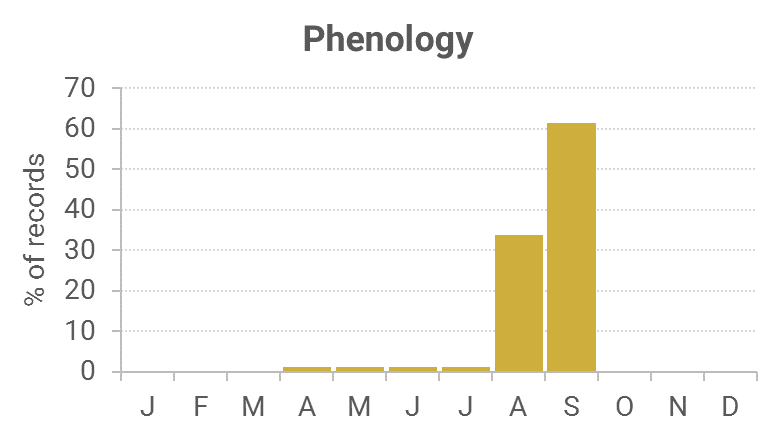Identification
A constant feature is the straw-coloured or whitish oval within a long black wedge. Another is the fine, dark inner central cross-line which is deeply zig-zagged.
Recording Method.
Attracted to light, also comes to sugar and flowers.
Life cycle
One generation. Overwinters as a small larva, during September to June. Pupates close to the ground.
Larval foodplants
Heather.
Habitat
Acid heathland and moorland. Most numerous where the heather is tall.
History
Gordon (1913) stated it was not uncommon on the moors around Corsemalzie (VC74), finding it on heather blossom after dark and adding that it also came to light on the moors. He added that larvae can be obtained by sweeping the heather in May and June. Earliest date was 18th August 1906.
Pelham-Clinton had found it at Glenluce (VC74) during the late 1950s, while in 1972 (BRC data) it was found at Mochrum Loch (VC74) and the Stroan Loch area (Vc73). Another five records were added in the latter half of the 1970s.
With no records during the 1980s, it was 1994 before it was seen again, and that was on Rough Island (VC73). Another record of a larva found on Carsegowan Moss (VC74) in 1997, was all that was found during the 1990s.
The first decade of the 21st century however had produced over twenty records, probably through portable trapping equipment being taken to the heather and moorland sites, like Corserig Hill and Kirkconnell Flow NNR.
